Similar presentations:
Theory of knowledge
1. Theory of knowledge
IB DP course2. Common sense
• What do you mean when you write or say“knowledge”?
• Organised common sense
3. GMO
Alexander Markov4. GMO
“I try to eat only Genetically ModifiedFood as there is no principal
difference between controlled
selection of favorable mutations and
natural selection. It is a big myth that
GM plants can be dangerous for you
health. There is no biological
mechanisms that allow plants to
incorporate new mutations in your
genotype. Moreover, it is the only
way to feed the increasing human
population”
Alexander Markov
5. Common sense
• Untested beliefs• Prejudice
• Blind authority
6. Paradox of cartography
• The map is not the territory. If a map is to beuseful, it should be imperfect
7. Certainty
• Could we be 100% sure that these facts aretrue?
• Alkaida bombed twin towers in 2001
• Murder is wrong
• All strawberries are red
8. Colorblind person view?
9. Radical doubt(Radical scepticism)
• A systematic process of being skeptical about(or doubting) the truth of one's beliefs.
• Rene Descartes The statement that is
absolutely certain – “I exist”
10. Relativism
• Protagoras: Truth is relative. It is only a matter of opinion.• Socrates: You mean that truth is mere subjective opinion?
• Protagoras: Exactly. What is true for you is true for you, and
what is true for me, is true for me. Truth is subjective.
• Socrates: Do you really mean that? That my opinion is true
by virtue of its being my opinion?
• Protagoras: Indeed I do.
• Socrates: My opinion is: Truth is absolute, not opinion, and
that you, Mr. Protagoras, are absolutely in error. Since this
is my opinion, then you must grant that it is true according
to your philosophy.
• Protagoras: You are quite correct, Socrates.
11. Concepts to remember
• Common sense• Relativism
• Radical doubt
12. Information vs knowledge
• Just when you think you know about something,you learn about it in more depth and realise your
previous knowledge was superficial.
• Information → disconnected facts (e.g. cramming
facts for an exam but lacking real understanding).
• Knowledge → facts connected by logic to help the
facts make sense (e.g. problem solving -arriving
at understood knowledge by considering all the
facts).
13. Argument
• Argument – a reason or reasons supporting aconclusion. Typical argument consists of:
premise(s) and a conclusion. Both a premise and
a conclusion are called claims or statements
Reasoned argument:
• 1. Premise (assumptions, laws, rules, facts,
observations, research data, statistics, anecdotal
evidence)
• 2. Conclusion (a claim that is supported by a
premise(s) )
14. Argument
15. Argument
We will not consider a dispute or a quarrelas an argument
16. Types of arguments
17. Types of arguments
• A deductive argument is one in which itis impossible for the premises to be true but the
conclusion false. Thus, the conclusion
follows necessarily from the premises and inferences.
In this way, it is supposed to be a definitive proof of the
truth of the claim (conclusion). (from general rules to
specific facts)
• An inductive argument is one in which the premises
are supposed to support the conclusion in such a way
that if the premises are true, it is improbable that the
conclusion would be false. Thus, the conclusion
follows probably from the premises and inferences.
(from specific facts to general rules)
18. Validity and soundness of an argument
• A deductive argument is said to be valid if andonly if it takes a form that makes it impossible
for the premises to be true and the conclusion
nevertheless to be false. Otherwise, a
deductive argument is said to be invalid.
• A deductive argument is sound if and only if it
is both valid, and all of its premises
are actually true. Otherwise, a deductive
argument is unsound.
19. Validity and soundness of an argument
20. Validity and soundness of an argument
21. Visualization of an argument using the Euler’s circles
• Euler’s circles are used to define the validity of anargument
• Circles represents different sets
• Intersection of circles – common elements of
several sets
• Lack of intersection - the lack of common
elements of different sets
• The circle inside the circle is a subset
• X is a single element
22. Visualization of an argument using the Euler’s circles
23. Example 1.
• Is the following argument valid? All dogs are animals.Fred is a dog. Fred is an animal.
• Draw regions to represent the premise. (Let x
represent Fred) Animals Dogs x Since:
❖ the set of all animals contains the set of all dogs, and
❖ that set contains Fred
❖ Fred is also inside the regions for animals.
Therefore, if both premises are true, the conclusion that
Fred is an animal must be true also. The argument is
valid as checked by the Euler diagram.
24. Example 2
• All rainy days are cloudy.• Today is not cloudy.
• Today is not rainy.
25. Example 3.
• All banana trees have green leaves• That plant has green leaves.
• That plant is a banana tree.
26. Example 4.
• All expensive things are desirable.• All desirable things make you feel good.
• All things that make you feel good make you
live longer.
• All expensive things make you live longer
27. Example 5.
• 1. All boxers wear trunks. Steve Tomlin is a boxer.-------------------------- Steve Tomlin wears trunks.
• 2. All residents of NYC love Coney Island hot dogs.
Ann Stypuloski loves Coney Island hot dogs. ----------------------------------------------- Ann Stypuloski is
a resident of NYC.
• 3. All politicians lie, cheat, and steal. That man
lies, cheats, and steals. ------------------------------------- That man is a politician.
28. Example 6.
• Given the premises: 1. All people who drivecontribute to air pollution. 2. All people who
contribute to air pollution make life a little worse.
3. Some people who live in a suburb make life a
little worse.
• Which of the following conclusions are valid? a)
Some people who live in a suburb drive. b) Some
people who contribute to air pollution live in a
suburb. c) Suburban residents never drive. d) All
people who drive make life a little worse.
29. JUSTIFIED true belief
• “Shown to be fair, right or reasonable”• Proof – enough evidence to claim something is
true
• Anecdotal evidence – personal stories
• Coinceidence – when two or more events
happens in the same time independently
• Correlation – when there is a relationship
between two o more events (not neccesary
causal)
• Causation – one event leads to another event
30. Evidence
Anecdotalevidence
Statistics
Experimental study
Expert opinion
Analogy
Weak
Strong
31. Anecdotal evidence
• Anecdotal evidence is essentially a story toldby individuals. It often comes in the form of “I
know a person who . . .,” but it can take many
guises.
32. Anecdotal evidence (Limitations)
• Incomplete (anecdotal evidence often missesimportant information that would result in
different conclusions)
• Inaccurate (they rely on people's memories
which are often incomplete and sometimes
outright wrong)
• An exceptional event (not typical)
• Not representative
33. Aron Remsey (Correlation doesn’t mean Causation)
• 1 May 2011 vManchester United: Osama bin
Laden dies 2 May 2011
• 2 October 2011 v Tottenham
Hotspur: Steve Jobs dies 5 October
2011
• 19 October 2011
v Marseille: Muammar Gaddafi
dies 20 October 2011
• 11 February 2012
v Sunderland: Whitney Houston
dies 11 February 2012
• 30 November 2013 v Cardiff: Paul
Walker dies 30 November 2013
• 9 January 2016 v Sunderland:
David Bowie dies 10 January 2016
34. Statistics vs. Anecdotal evidence
Statistical methodologyAnecdotal evidence
Large, representative samples
Very small, biased samples
Precise measurements in controlled Casual observations in
situations
uncontrolled circumstances
Measure/control all other relevant
factors that affect the outcome
Other important factors are
unaccounted
Careful about making causal
connections
Causal connections are made too
easily
35. Statistics vs. Anecdotal evidence
A representative sample is a small quantity of something that accurately reflects thelarger entity. An example is when a small number of people accurately reflect the
members of an entire population. In a classroom of 30 students, in which half the
students are male and half are female, a representative sample might include six
students: three males and three females.
36.
37. Limitations of correlations
• It is hard to directly measure non-physicalconcepts (love, kindness)
• Impossible to say what is CAUSE and what is
EFFECT
• Results are true on average
• Two events might occur independently from
each other but at the same time
38. Weak evidence for the right claim
• In 1964 the United States’ Surgeon General issueda report claiming that cigarette smoking causes lung cancer.
Unfortunately, according to Pearl the evidence in the report
was based primarily on correlations between cigarette
smoking and lung cancer. As a result the report came under
attack not just by tobacco companies, but also by some of
the world’s most prominent statisticians, including the
great Ronald Fisher. They claimed that there could be a
hidden factor – maybe some kind of genetic factor – which
caused both lung cancer and people to want to smoke (i.e.,
nicotine craving). If that was true, then while smoking and
lung cancer would be correlated, the decision to smoke or
not smoke would have no impact on whether you got lung
cancer.
39. Causal connection
• Experiment(randomized, controlled) is theonly method that can demonstrate the causal
connection between two different events,
concepts, etc.
40. Design of an experiment (Variables)
• Variable - things that are changing in an experiment• Dependent variable(DV)- is what will be measured; it's what the
investigator thinks will be affected during the experiment
• Independent variable(IV)- is what is varied during the experiment;
it is what the investigator thinks will affect the dependent variable.
• Controlled variable (CV) -- the variables held constant. Since the
investigator wants to study the effect of one particular independent
variable, the possibility that other factors are affecting the outcome
must be eliminated.
• Since you need to know which factor is affecting the dependent
variable(s), there may be only one independent variable. The
investigator must choose the one that he/she thinks is most
important. But the scientist can measure as many dependent
variables as he/she thinks are important!!!
41. REMEMBER!!!
42. Design of an experiment (Operationalization)
• Operationalization - the process of strictly defining variables intomeasurable factors. The process defines fuzzy concepts and allows
them to be measured, empirically and quantitatively (making
variables measurable)
• “Children grow more quickly if they eat vegetables.”
• What does the statement mean by 'children'? Are they from
America or Africa. What age are they? Are the children boys or
girls? There are billions of children in the world, so how do you
define the sample groups?
• How is 'growth' defined? Is it weight, height, mental growth or
strength? The statement does not strictly define the
measurable, dependent variable.
• What does the term 'more quickly' mean? What units, and what
timescale, will be used to measure this? A short-term experiment,
lasting one month, may give wildly different results than a longerterm study.
43. LOVE is
44. Design of an experiment (Groups)
• Experimental group - the group in a scientificexperiment where the experimental procedure is
performed. This group is exposed to the independent
variable(IV).The changes of dependent variable(s)(DV)
are observed and recorded. Controlled variables(CV)
are stable and are the same in comparison with the
controlled group
• Control group - a group separated from the rest of the
experiment where the independent variable being
tested cannot influence the results. This isolates the
independent variable's effects on the experiment and
can help rule out alternate explanations of the
experimental results.
45. REMEMBER!!!
• While all experiments have an experimental group, not allexperiments require a control group. Controls are
extremely useful where the experimental conditions are
complex and difficult to isolate. Experiments that use
control groups are called controlled experiments.
46. Design of an experiment (sample)
• The idea of trying to take a representative section of thepopulation, perform the experiment and extrapolate it
back to the population as a whole.
• Sample must be representative
• The bigger the better, if a sample is randomly assigned
47. Invent a design of your own social experiment
• Hypothesis• IV,DV,CV (operationalization)
• Size of sample (How can you make it
representative?)
• Controlled group, experimental group
48. Gaining knowledge
Knowledge is often context dependent
Cultural background
Social surrounding
Time
Religion (or its absense)
49. Bathing in the Middle ages
50. The colour of death? (China vs Japan)
51. The Nazi symbol for 75 years vs Hindu symbol for thousands of years
52. Personal knowledge
• Knowledge in this sense is aboutbeing familiar with something: in
order to know Amy, one must have
met her; in order to know fear, one
must have experienced it.
• If you begin to think of examples to
complete the sentence ‘I know….’
there’s a mass of things you could
think of. Your list is unique to you.
• Give an example of your personal
knowledge
53. Shared knowledge
• Shared knowledge is assembledby a group of people.
• If you make a list of things that
‘we know…’ there’s more
common knowledge that people
agree on. In each of your six IB
subjects, there’s a body of shared
knowledge.
• …was built up over centuries by
thousands of talented scientists
54. Euler’s diagram again!
55. The zone of exchange
• Think and question!• Why should we believe
what others tell us?
• How do we know it is true?
• Is there another way of
thinking about what we are
taught?
• We=Parents but what if
not?
56. Experiential knowledge
• Experiential knowledge depends on living in theworld, having sensations and emotions, learning
language and thinking.
• Direct experience(immediate contact with the
things around, active involvement, personal
familiarity) It is unique!
• Critical Reflection – experience will pass, but
thoughts remain. The habit of reflection can
strengthen your personality! Watch out for
mistakes in your thinking, it might improve your
reflection.
57. Knowing how
• Skill based knowledge – experience that helpsus to learn a skill
• Something between step by step information
and experience
• All thinking skills are useless unless they are
applied!
58. Howard Gardner’s Mulltiple Intelligence
59. Propositional knowledge
• This is knowledge of facts, knowledge thatsuch and such is the case.
• What is important is that propositional
knowledge is not enough to give you either
personal knowledge or procedural knowledge.
Personal knowledge involves acquiring
propositional knowledge in a certain way, and
procedural knowledge may entail
propositional knowledge.
60. Knowledge claim
• Knowledge claim is asserting that you knowsomething
• Expressed in language, gestures, photos,
music – all that communicate between people
• Phrased as a statement (not question)
• Presented as being true (even being highly
questionable)
61. Knowledge claim
• Statement of personal observation• Assertion of what we know through our sense
62. Knowledge claim
• Value judgment• Opinions that can not prove to be true or false
63. Knowledge claim
• Predictions• You can apply observations of the past to the
future
64. Knowledge claim
• Hypothetical statement• Based on past observation and places two
actions with causal connection
65. Knowledge claim
• Metaphysical statement (Meta - beyond)• An assertion of spiritual belief
66. Knowledge claim
• Definition• Places ideas in relation with each other using
language
67. Knowledge question
• Questions about knowledge and the methodsby which we create it
• Opened
• General
68. Knowledge questioning (from broad to narrow)
• How do I know what I know?• How do we gain knowledge? How do we test
it? How do we accept knowledge claims?
• How do we know in the human science as
compared with the natural science?
• How do we know in anthropology is compared
to economics?
• What characterizes the method of participant
observation in antropology?
69. Knowledge questioning (from narrow to broad)
Baptism of Russia happened in 989
What evidence is available for the date?
How do we know that it happened?
How do we know what happened in the past?
70. Practice in pairs
• Take one knowledge claim• What knowledge questions will you ask about
it? (from narrow to broad)
• Ask at list 4-5 questions
71.
72. How do we know that the knowledge claim is true?
73. Coherence check for truth
• It this knowledge claim consistent with what Ialready know?
• Are there any contradictions?
74. Check for truth game
• Write 4 personal knowledge claims aboutyourself
• 3 true
• 1 false (it should not be obvious!)
75. Limitations of coherence test
• Are we right in beliefs that we previouslyheld? (Be open-minded, please!)
• Confirmation bias – seeking for evidence for
your position ignoring the evidence against
• Problems with relativism and subjectivity
76. Correspondence test
• Does the knowledge claim correspond tothings actually are in the world?
• Observe
• Find evidence
77. Think about this
• What problems can you identify in establshingtruth on the basis of sufficient evidence?
• Is it possible for two people using the
correspondence test to reach different
conclusions?
78. Limitations of the correspondence test
• Not all knowledge claims can be checked bycorrespondence since not all are
OBSERVATIONAL CLAIMS
• Reliability depends of quantity and quality of
observation
79. Pragmatic test for truth
• Does it work?• If it is useful, it is true
80. Pragmatic test
• The practical results of a theoretical conceptmay give us a reason to trust
• What problems can you see with a society
accepting what works for it, and calling it
truth?
• Is it possible for two people using the
pragmatic test to reach different conclusion?
81. Limitations of Pragmatism
• When people find a way that works, theytend to ignore that thought that something
could work better.
• How can we define usefulness?
82. Limitations of Pragmatism
• It deals with consequences, not withexplanations
• Stimulus to ask further questions and
examine the claim using two more checks
83.
84. Ways of knowing
• Ways that people have claimed lead them toknowledge
85. Reason, Sense Perception, Faith
• Reason – capacity of mind to be logical andfigure things out
• Sense Perception – sensation + interpretation
• Faith – all about religious knowledge (not
serious)
86.
87.
88. GM FOOD
• What are they?• What is your position on them – and how have you
arrived at that position?
• How are they commonly perceived – do most people
arrive at their position using the same ways of
knowing as you?
https://www.youtube.com/watch?v=EzEr23XJw
FY
89. Questions on GM foods
• Should we use reason alone to determinewhether GM food should be promoted or
limited?
• Are other ways of knowing - faith, intuition,
emotion - valid?
• What role does language play in persuading us of
either side’s point of view?
• Should we apply imagination to help us
understand what might happen if GM food was
either halted completely, or pursued with no
limitations?
90. Daniel Tammet: different ways of knowing
• In pairs, watch Daniel Tammet’s talk• Compose six questions you’d like to ask Daniel
Tammet based on what he talks about
• Imagine the answers that he might provide,
and write them down
https://www.ted.com/talks/daniel_tammet_diff
erent_ways_of_knowing?language=ru#t29516
91. Sense perception
• Sensation (taste, vision, smell etc.)• Interpretation
92. MORE THAN MEETS THE EYE
• Empiricism: all knowledge is ultimately basedon perceptual experience.
• Common-sense Realism: our sensory
apparatuses are relatively straight-forward
and passive, giving us an accurate picture of
reality.
• Problem: interpretation plays a big role in
what we perceive.
93.
Olny srmat poelpe can raed this. I cdnuolt blveiee that I cluod aulacltyuesdnatnrd what I was rdanieg. Bacuese of the phaonmneal pweor
of the hmuan mnid, aoccdrnig to rscheearch at Cmabrigde
Uinervtisy, it deosn’t mttaer in what oredr the ltteers in a word are,
the olny iprmoatnt tihng is that the first and last ltteer be in the
rghit pclae. The rset can be a taotl mses and you can still raed it
wouthit a porbelm. This is bcuseae the huamn mnid deos not raed
ervey lteter by istlef, but the word as a wlohe. Amzanig, huh? Yaeh
and I awlyas tghuhot slpeling was ipmorantt!
94.
Sense perception is theactive, selective and
interpretive process of
recording or becoming
conscious of the external
world
95.
• Perception can be thought of consisting oftwo distinct parts
• Sensation: The part provided by the world
around us
• Interpretation: The part provided by our
minds
96.
Our experience of the world isaffected not only by what is ‘out
there’ but also by our sense organs
AND our minds
97. DECISION
• If for some reason you had to sacrifice one ofyour senses, which would you be most willing
to lose and which would you be least willing to
lose?
• Why?
98.
99.
100. PERCEPTUAL ILLUSIONS
• FIGURE AND GROUND: tendency to highlight certainaspects (figure) and treat other parts as background
(ground).
• VISUAL GROUPING: tendency to look for meaning in
what we see and group things into patterns and
shapes
• CONTEXT: the way we see something depends in
part on the surrounding context
• EXPECTATION: we see what we expect to see
101. CONTEXT
102.
103. VISUAL GROUPING
104.
105. DAILY LIFE ILLUSIONS
• You are also facing visual illusions in your daily life:• TV ----- All the colors you see on TV are just due to 3 colors (red,
green and blue). Because they are so close, the retinal images
overlap and different colors result.
• Clothes with vertical stripes make a person look thinner than
clothes with horizontal stripes.
• The moon racing through the clouds ----- we tend to view large
objects (the large clouds) as stationary and the smaller object (the
moon) as the one moving.
• A red car looks larger than a green car of the same model when
viewed from far above, because of different speeds of light.
106. EYEWITNESS TESTIMONY
• https://www.youtube.com/watch?v=KffGHRXED0• https://www.youtube.com/watch?v=UuqFX9E
Q9zw
107. Loftus and Palmer (1974) Study
• Aim: To test their hypothesis that the language used ineyewitness testimony can alter memory.
• To test this Loftus and Palmer (1974) asked people to
estimate the speed of motor vehicles using different forms
of questions. Estimating vehicle speed is something people
are generally poor at and so they may be more open to
suggestion.
108. Loftus and Palmer (1974) Study
• Findings: The estimated speed was affected by the verb used. Theverb implied information about the speed, which systematically
affected the participants’ memory of the accident.
• Response-bias factors: The misleading information provided may
have simply influenced the answer a person gave (a 'response-bias')
but didn't actually lead to a false memory of the event. For
example, the different speed estimates occur because because the
critical word (e.g. 'smash' or 'hit') influences or biases a person's
response.
• The memory representation is altered: The critical verb changes a
person's perception of the accident - some critical words would
lead someone to have a perception of the accident being more
serious. This perception is then stored in a person's memory of the
event.
109. THREE CONFIRMATION TESTS
• Confirmation by another sense—touching isbelieving
• Coherence—something fits in with our overall
experience
• Independent testimony—other witnesses see
the same thing
110. LINKING QUESTIONS
Do we have the right interpretation of our senses ?
How do we know ?
Is perception or reason the more reliable source of knowledge?
How does the way we describe something affect how we see it?
How does your mood affect your perception of things?
Does perception play any role in mathematics?
How far do expectations influence observations?
How does the act of observation influence that which is observed?
Should we trust eyewitness evidence?
To what extent do the arts help us see with new eyes?
Do good people see the world differently from bad people?

































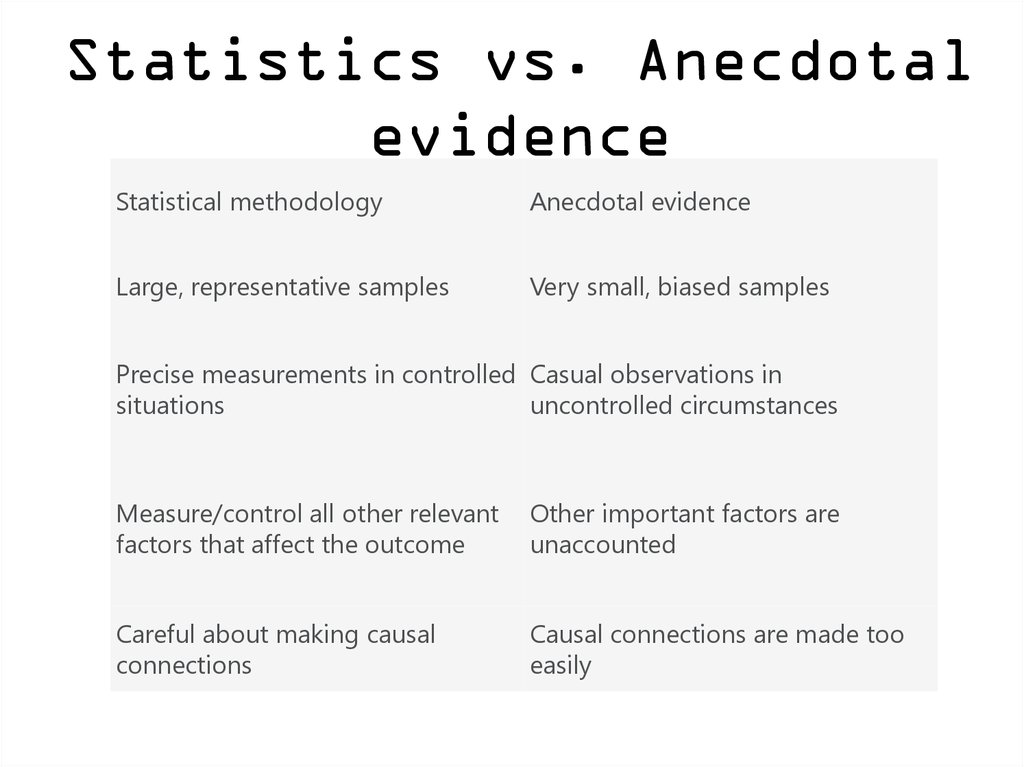









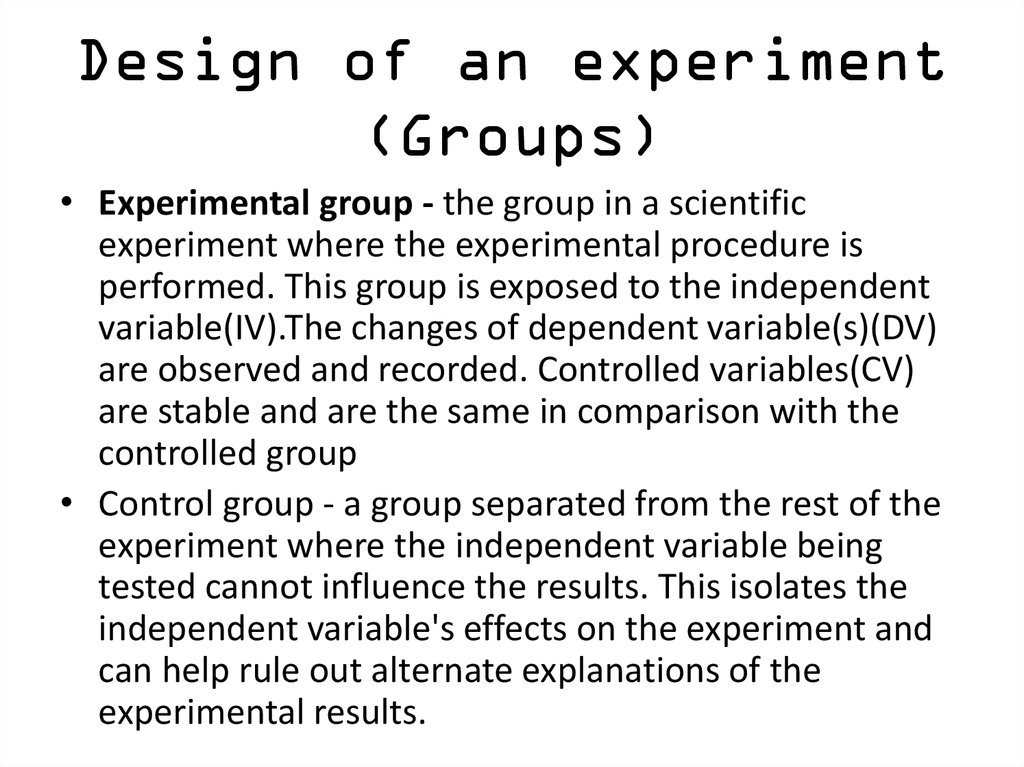


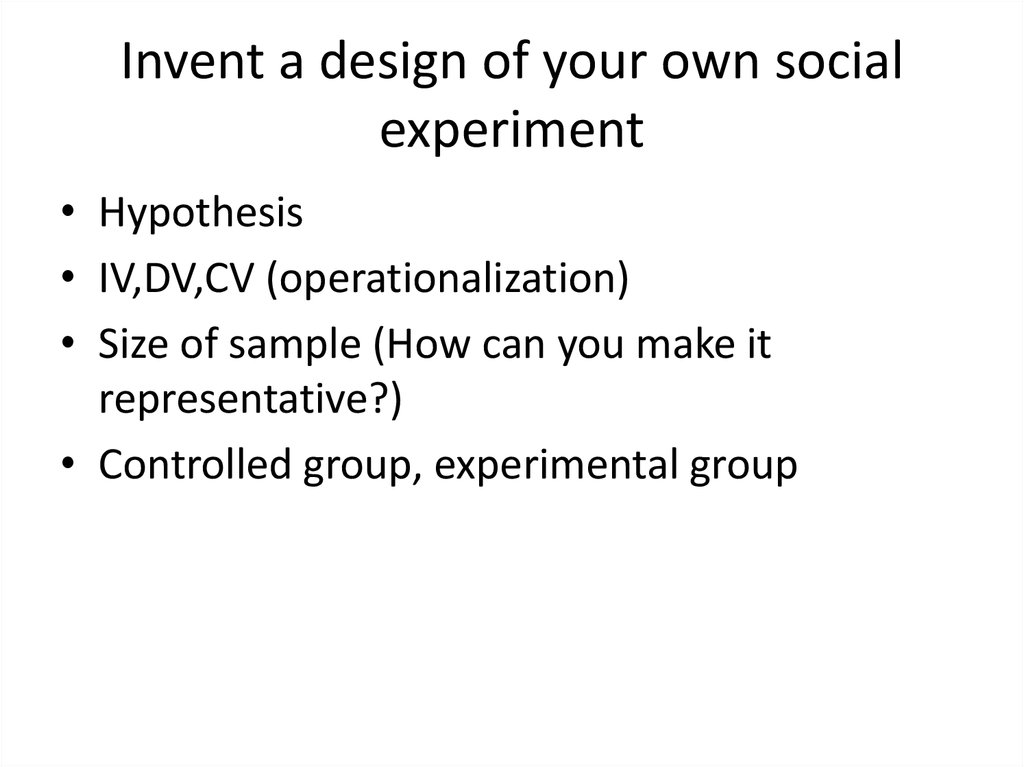

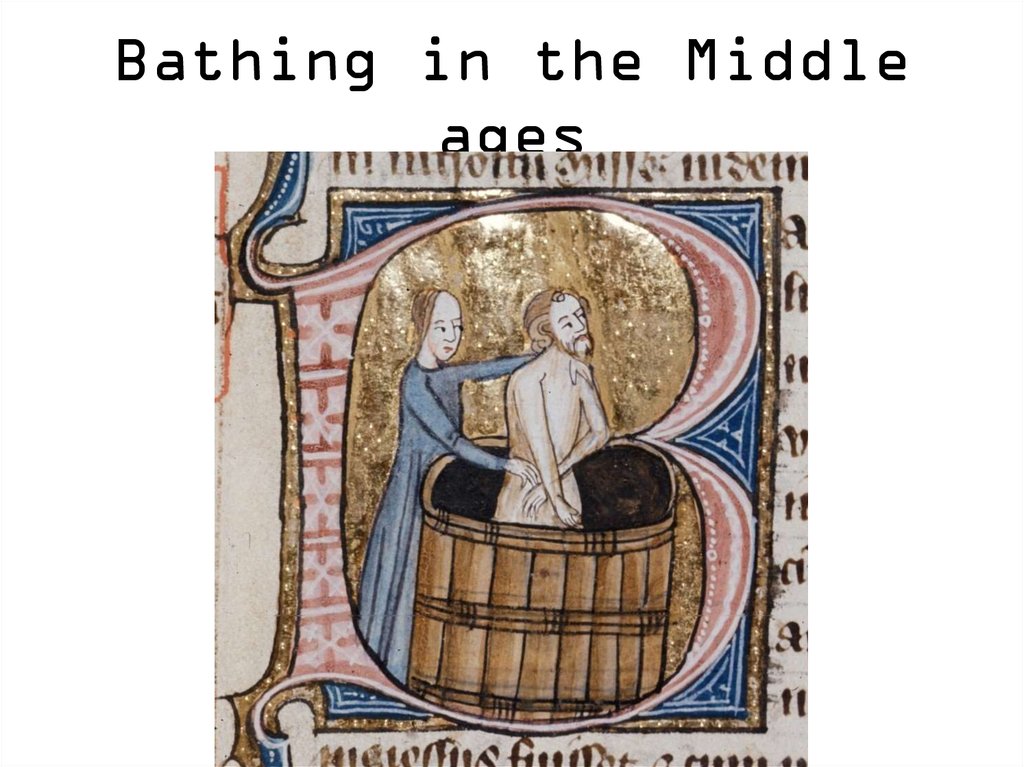





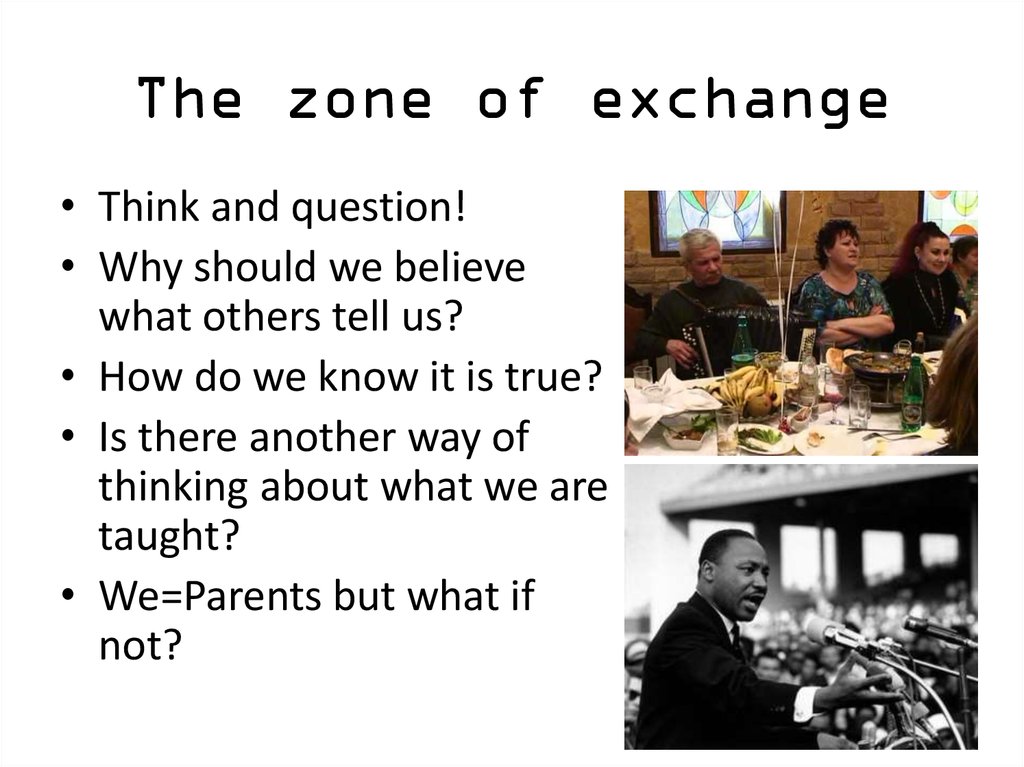
























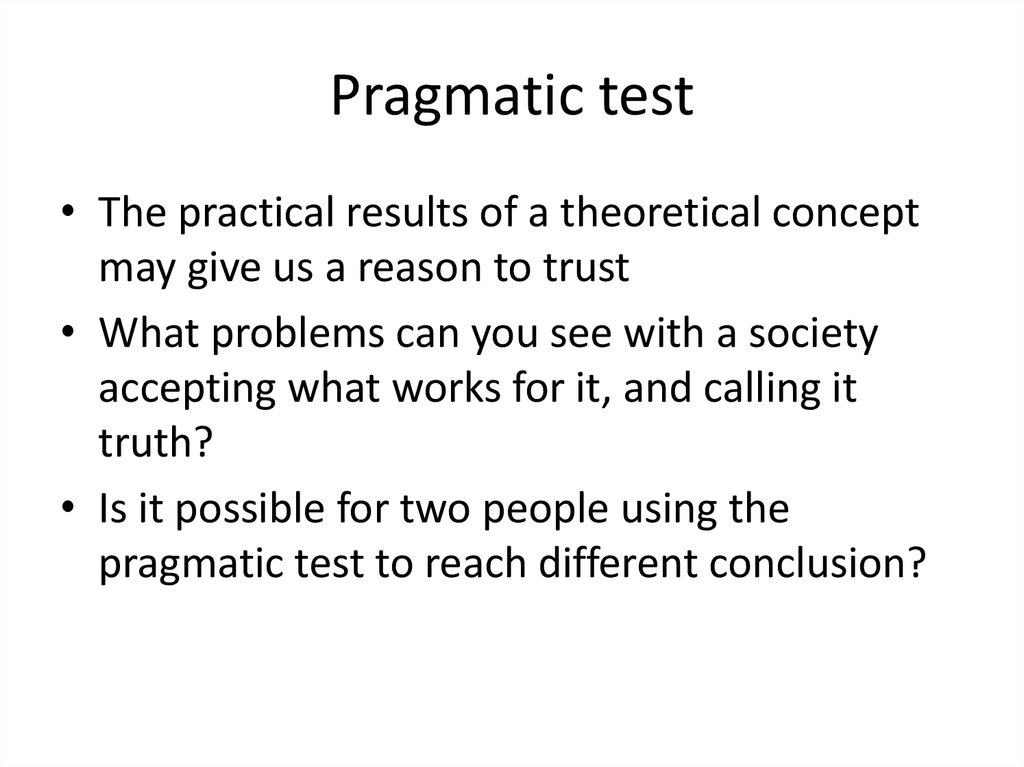








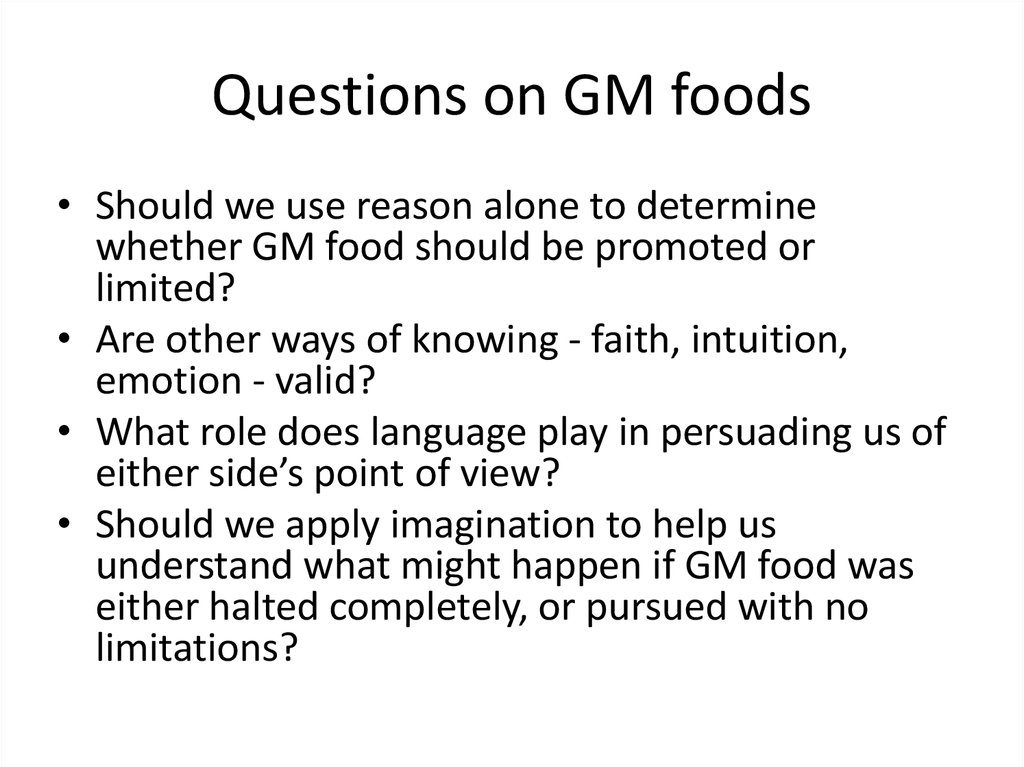
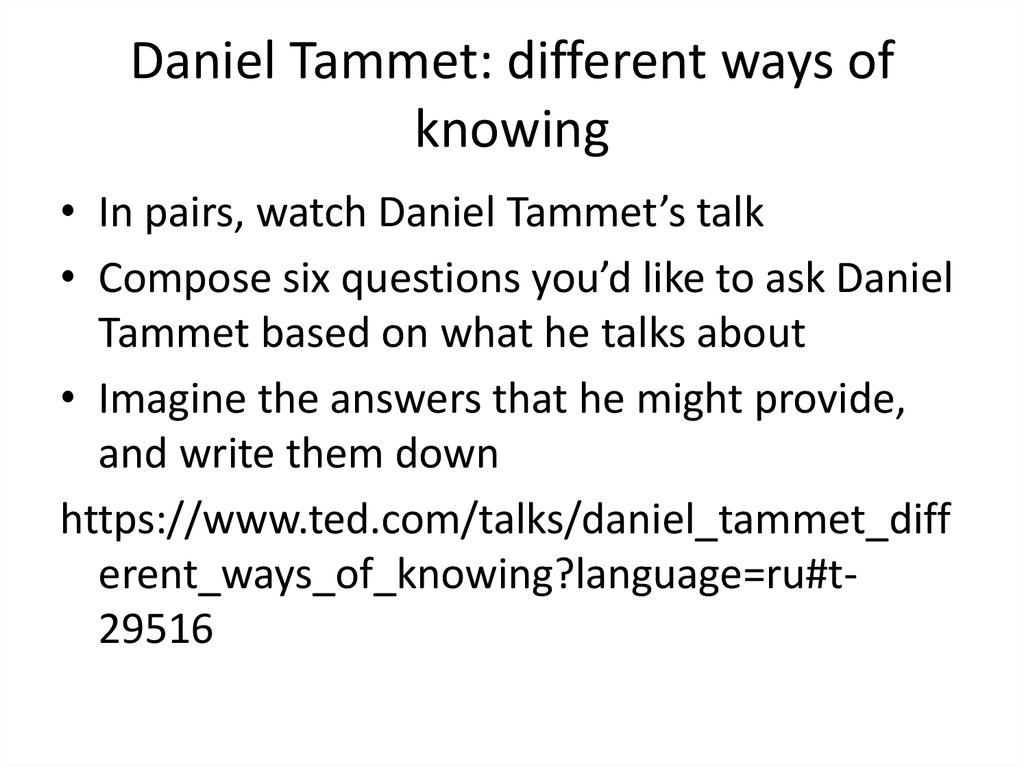

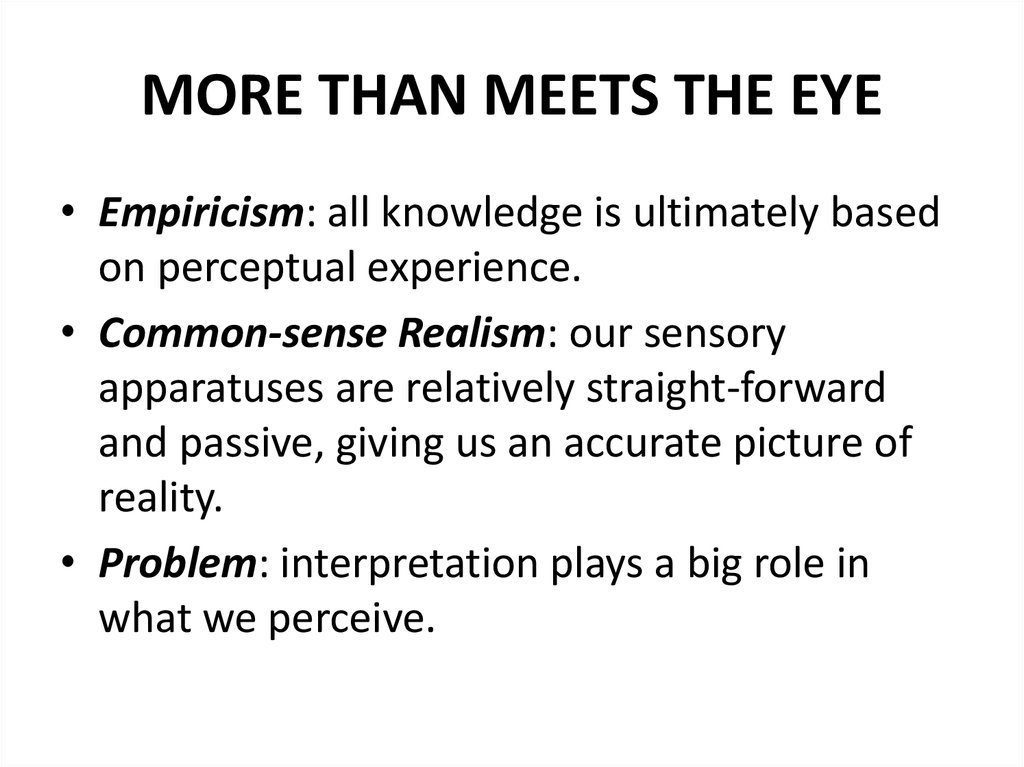

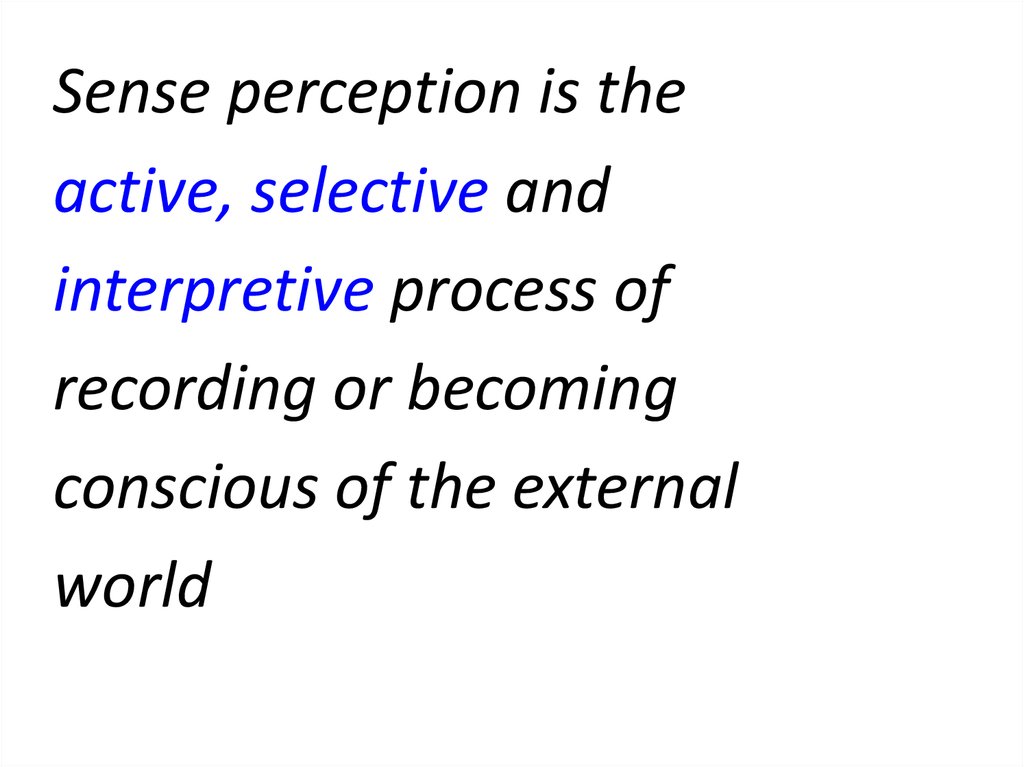







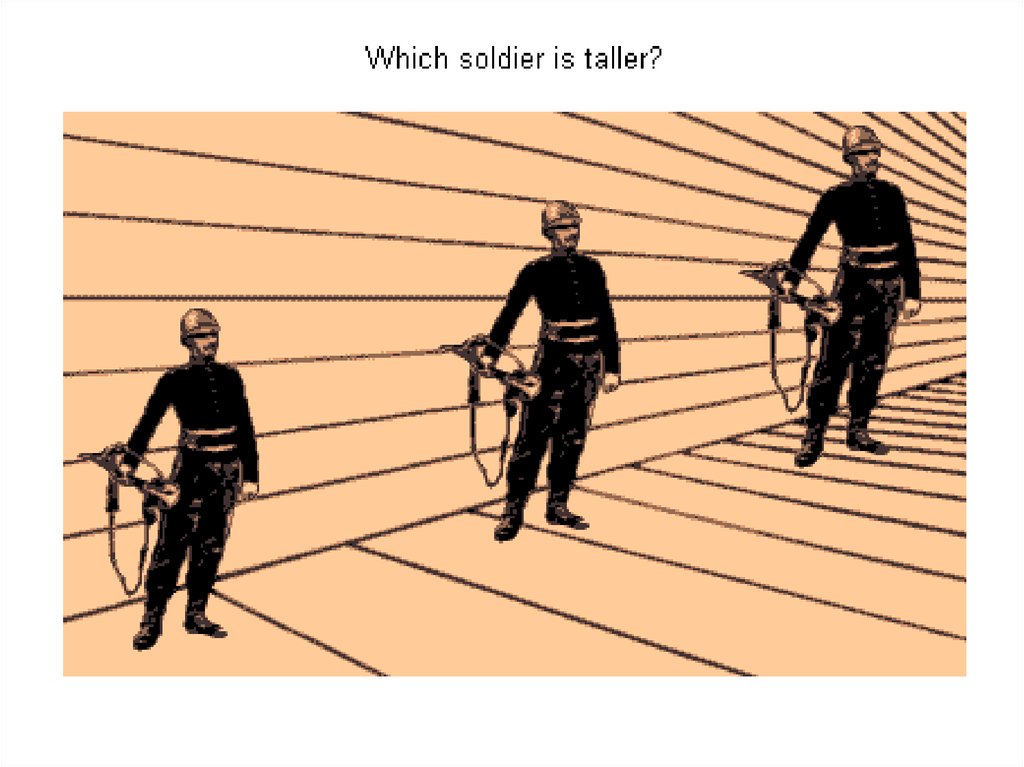



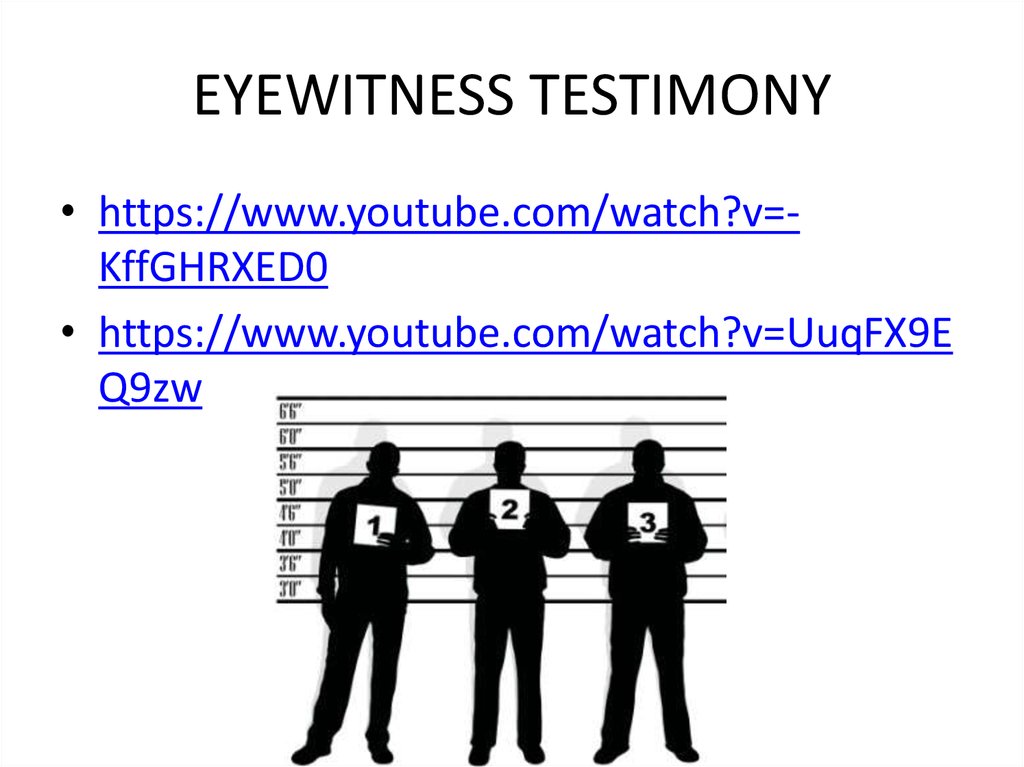






 philosophy
philosophy








